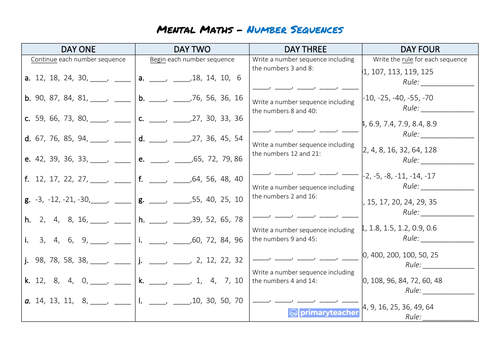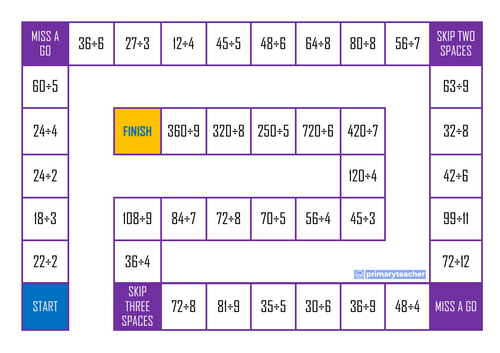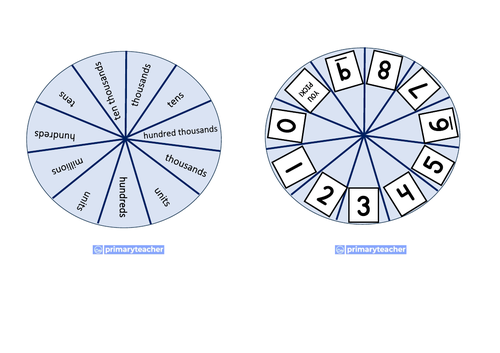
10Uploads
499Views
44Downloads
Mathematics

Mental Maths Strategy Posters
Mental maths strategy posters suitable for classroom display and useful for reinforcement during whole-class or small-group teaching.
Included in the pack are the following strategies:
Count on
Count back
Re-order
Partition
Use Factors
Use Equivalence
Round and Adjust

Mental Maths Daily Practice Sheet (Number Sequences)
Mental Maths Daily Practice Sheet focussing on finding the mean/average.
ANSWER SHEET INCLUDED
The questions are aimed at upper Key Stage Two level (Primary Six/Year 5 or Primary Seven/Year 6).
This sheet is suitable for homework practice or daily practice in class, and is perfect for preparing a class for a weekly Friday assessment.

Mental Maths Daily Practice Sheet (Mean/Average)
Mental Maths Daily Practice Sheet focussing on finding the mean/average.
ANSWER SHEET INCLUDED
The questions are aimed at upper Key Stage Two level (Primary Six/Year 5 or Primary Seven/Year 6).
This sheet is suitable for homework practice or daily practice in class, and is perfect for preparing a class for a weekly Friday assessment.

Mental Maths Division Board Game
Enable Key Stage Two pupils to practise mentally dividing a range of two-digit and three-digit numbers by a one-digit number.
In the board game, pupils will state the correct answer to progress. Sums are designed to encourage pupils to use already-known facts to solve more difficult problems, such as using 16÷4 to solve 160÷4.
The game increases in difficulty as players move around the board, with the final calculation being 360÷9.
Play by rolling a dice or number spinner.
This resource is perfect as an introductory aid, extension task or plenary in the Key Stage Two classroom.
Aimed at Primary 6/Year 5 or Primary 7/Year 6.

Place Number Bingo Game
A game to assess one of the fundamental building blocks of primary mathematics: understanding of ‘place value’.
Differentiated to meet the needs of a typical Key Stage Two classroom.
Game Board One for two players - up to numbers in millions
Game Board Two for two players - up to numbers in hundred thousands
Game Board Three for two players - up to numbers in tens
Comes with custom-made spinners.
How to play:
Player One will use a paperclip and pencil, placing the pencil at the centre of the spinner with the tip of the pencil inside the end of the paperclip.
Player One will flick the paperclip and will be given a designated place value column when the paperclip stops. The process is repeated for spinner two where the player finds the number they should search for in that column, e.g. 6 in thousands column.
If a player has the number in the correct column, they will place a counter on the game square. If they do not, Player Two will take their turn.





